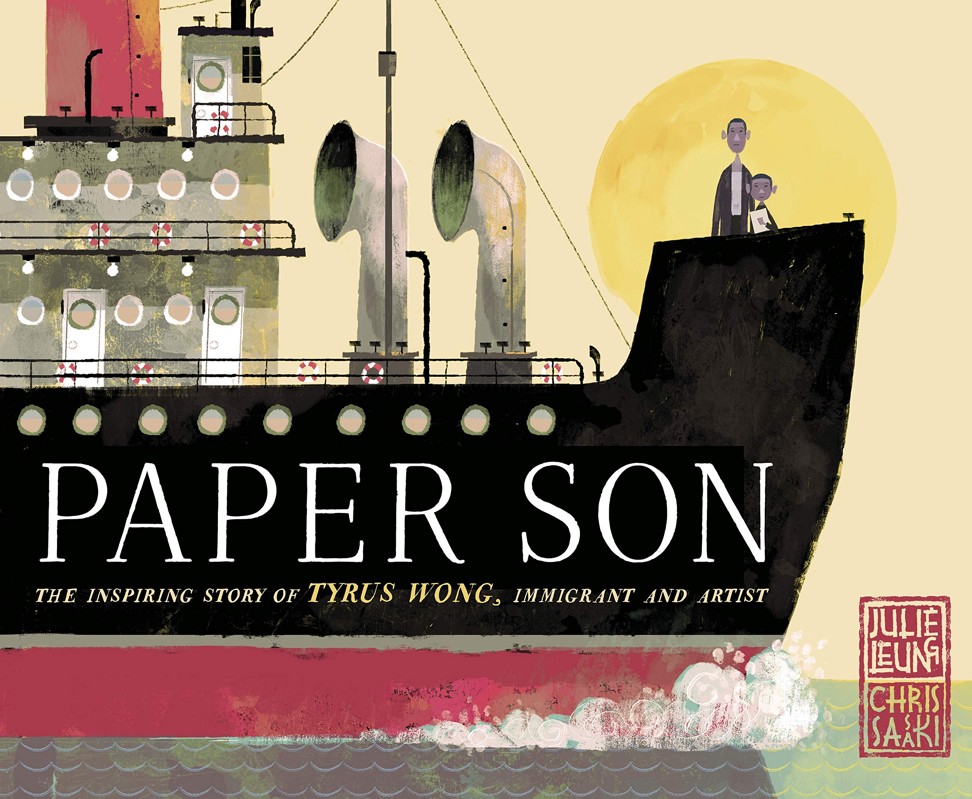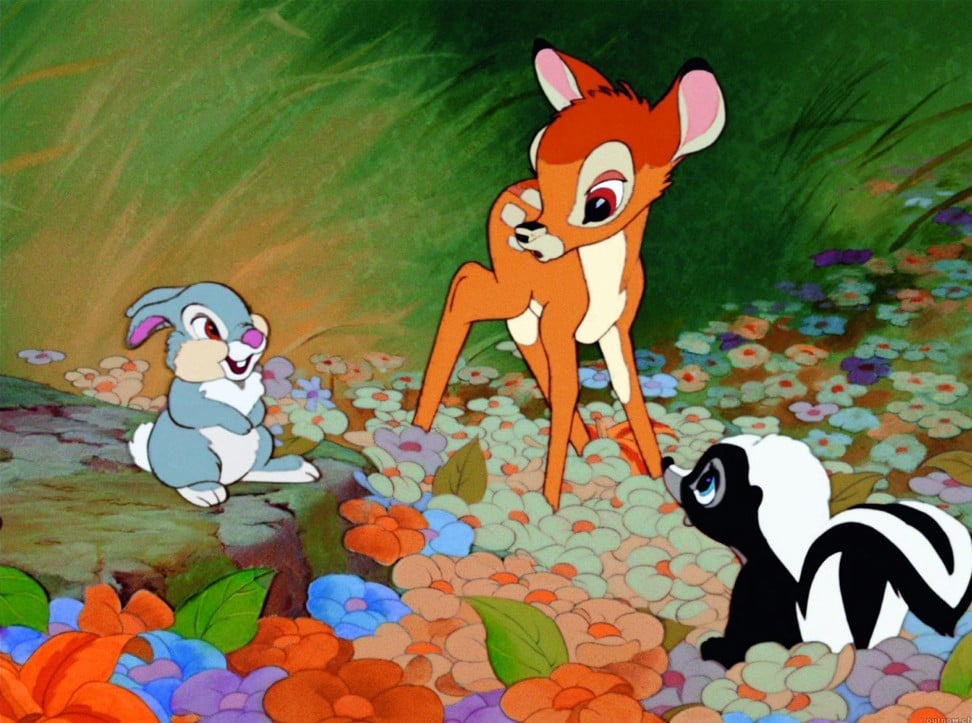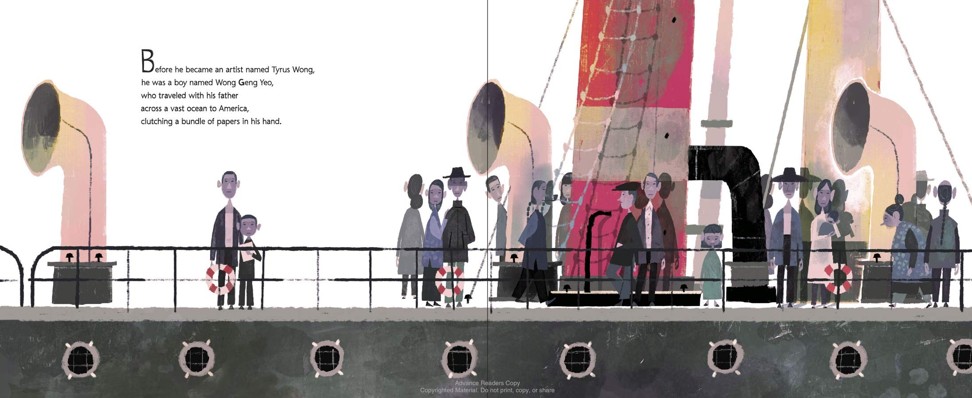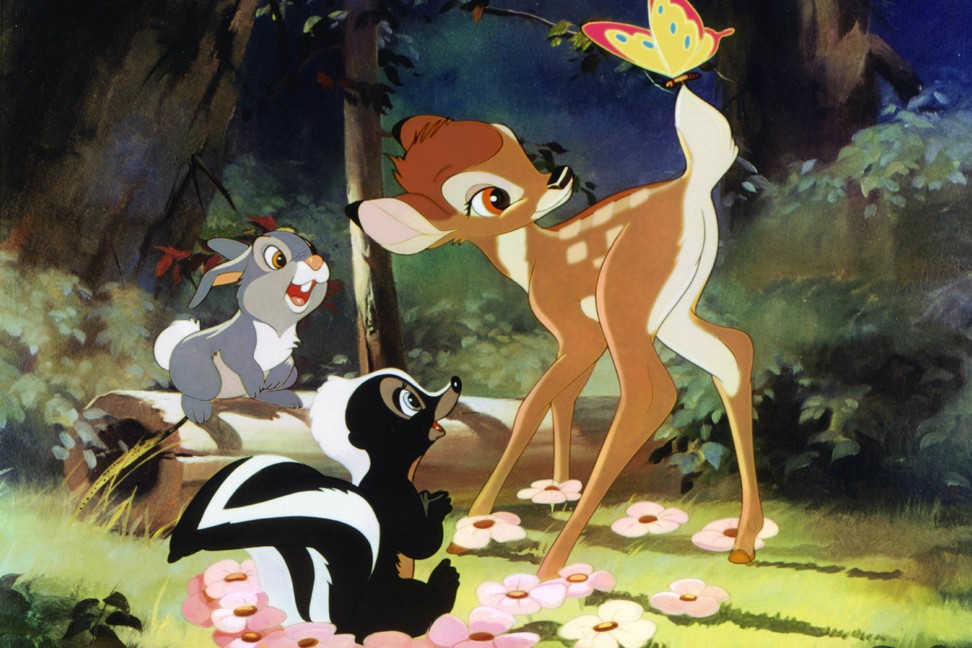
The Chinese artist who drew Disney’s Bambi: a look at the life of the immigrant behind the illustrations
- Tyrus Wong didn’t receive credit for his work on the 1942 Disney film even though he was the lead production illustrator
- His journey to the US and his rise to Walt Disney’s studios is told through Julie Leung and Chris Sasaki’s new book ‘Paper Son’

Paper Son: The Inspiring Story of Tyrus Wong, Immigrant and Artist, by Julie Leung and Chris Sasaki (illustrations). Published by Schwartz & Wade. 4/5 stars
Growing up in Atlanta in the US, Julie Leung didn’t have many opportunities to read about inspiring Chinese-Americans.
That’s why, when she learned about Tyrus Wong – the artist who helped to create the Walt Disney film Bambi – through his New York Times obituary, she decided to tell his story.
Leung’s words in Paper Son: The Inspiring story of Tyrus Wong, Immigrant and Artist are accompanied by beautiful illustrations by Chris Sasaki. She begins with Wong’s immigration to the United States in 1919, at a time when the Chinese Exclusion Act was in full force. The act was an immigration law that had passed in 1882 that prevented Chinese labourers from immigrating to the United States.

Because of the act, Wong and his father have forged papers that claim they are merchant Look Git and his son Look Tai-yow. Every night on the journey, Tyrus, who even as a nine-year-old loved art, studies with care the papers that contain details about his new life.
His studies come in handy when the pair arrived in California, where Tyrus is held back and questioned. Afterwards, he is reunited with his father, who tells him they must look for opportunities, and at school, Tai-yow is Americanised to Tyrus. Eventually, he is able to enrol at the Otis Art Institute in Los Angeles.

Tyrus then gets a job at Walt Disney Studios. There, he hears about the making of the movie Bambi – and he senses an opportunity to use his style of painting that combines East and West.
Leung does an excellent job in telling Wong’s story. A refrain of opportunity and hard work – like it does in many stories of immigration – repeats through the book, but it is gentle and never preachy.
Wong did not receive credit for his work on the 1942 Disney film even though he was the lead production illustrator. He remained unrecognised for his efforts, but artistic expression nonetheless remained a key part of his life. In spite of this, he continued to create and served as a set designer or storyboard artist on films such as Rebel Without a Cause (1955), Around the World in 80 Days (1956) and The Wild Bunch (1969).

Leung’s decision to emphasise this element of Wong’s life and his perseverance is an important one, and is a lesson that many need to learn (and re-learn). Her prose is imaginative and poetic – as a janitor, Wong “swirled the soapy water around, the mop dancing in his hands like a paintbrush” – and the rhythm of the text makes it perfect for reading out loud.
Sasaki’s illustrations are rich in detail, and pair well with Leung’s words. He finds ways to show what life would have been like for Wong in 1938 when he joined Disney in the early days of animation. For example, Wong is pictured at his desk, surrounded by other animators drawing at their desks – and he is the only person with black hair.
In her author’s note, Leung writes that her family immigrated to the US from a village around 60km (37 miles) from Wong’s, adding that she identifies with the resilience that Wong and his father displayed as immigrants in a country that did not want them.

In sharing his story, Leung helps to show the ways in which Wong left his mark on the world as an artist, and gives him back the recognition he deserves.
Asian Review of Books